Effect of SiC Contents on Wear Resistance Performance of Electro-Codeposited Ni-SiC Composite Coatings
Abstract
:1. Introduction
2. Materials and Experimental Procedure
2.1. Electrodeposition
2.2. Characterization Techniques
3. Results and Discussion
3.1. Surface Morphology and Structure of the Ni-SiC Composite Coatings
3.2. Wear Resistance of the Ni-SiC Composite Coatings
3.3. Wear Mechanism of Ni-SiC Composite Coatings
4. Conclusions
- (1)
- Micron SiC particles incorporation results in a nanocrystalline metal matrix and nanotwins in nickel nanograins have been characterized by transmission electron microscopy (TEM).
- (2)
- Microhardness and wear resistance Ni-SiC composite coatings increase with the increasing SiC content. Microhardness is improved due to the grain-refinement strengthening effect and the presence of a nanotwin structure. The superior wear resistance of Ni-SiC composite coatings is attributed to its fine microstructure, high microhardness, and the strong bonding of SiC particles with the matrix.
- (3)
- The worn scars on the counter balls give information on the wear resistance of Ni-SiC composite coatings. The elliptical worn scar reflects the low-wear resistance of the Ni-10.1 vol.% SiC composite coating. The round and small worn scar on the counter ball corresponds to the shallow and narrow worn track of the Ni-17.8 vol.% SiC composite coating, revealing a low wear rate and excellent wear resistance.
- (4)
- The dominant wear mechanism is oxidation. Oxidation wear has been described in two stages. A higher SiC content increases the duration of the first stage and slows down the rate of breaking up into debris, thereby decreasing the wear rate.
Author Contributions
Funding
Institutional Review Board Statement
Informed Consent Statement
Data Availability Statement
Conflicts of Interest
References
- Rao, H.; Li, W.; Luo, Z.; Liu, H.; Zhu, L.; Chen, H. Nucleation and growth mechanism of Ni/SiC composite coatings electrodeposited with micro- and nano-SiC particles. J. Mater. Res. Technol. 2024, 30, 3079–3091. [Google Scholar] [CrossRef]
- Maurya, R.; Katiyar, P.K.; Yadav, P.C.; Rani, P. Influence of pulse frequency on microstructure, mechanical properties, and corrosion resistance of electrodeposited Ni-SiC composite coatings. Mater. Today Commun. 2024, 40, 109977. [Google Scholar] [CrossRef]
- Beldar, P.; Kumavat, H.R. Comparative analysis of mechanical properties of SiC particle addition on Al6061/Ni and Al6061/Cr metal matrix composites. Mater. Lett. 2024, 369, 136745. [Google Scholar] [CrossRef]
- Kim, M.; Sun, F.; Lee, J.; Hyun, Y.K.; Lee, D. Influence of ultrasonication on the mechanical properties of Cu/Al2O3 nanocomposite thin films during electrocodeposition. Surf. Coat. Technol. 2010, 205, 2362–2368. [Google Scholar] [CrossRef]
- Gadgil, B.; Damlin, P.; Heinonen, M.; Kvarnström, C. A facile one step electrostatically driven electrocodeposition of polyviologen–reduced graphene oxide nanocomposite films for enhanced electrochromic performance. Carbon 2015, 89, 53–62. [Google Scholar] [CrossRef]
- Gamal, H.; Elshahawy, A.M.; Medany, S.S.; Hefnawy, M.A.; Shalaby, M. Recent advances of vanadium oxides and their derivatives in supercapacitor applications: A comprehensive review. J. Energy Storage 2024, 76, 109788. [Google Scholar] [CrossRef]
- Jiang, W.; Zhu, F.; Li, J.; Shi, J.; Wen, X.; Chen, Y.; Lao, Y. Co-deposition of different mixed nanoparticle concentrations with nickel as efficient OER electrocatalysts in alkaline media. Int. J. Hydrogen Energy 2024, 69, 749–759. [Google Scholar] [CrossRef]
- Tewari, K.; Thapliyal, D.; Bhargava, C.K.; Verma, S.; Mehra, A.; Rana, S.; Gautam, A.K.; Verros, G.D.; Arya, R.K. Innovative Coating Methods for the Industrial Applications. In Functional Coatings: Innovations and Challenges; Wiley: New York, NY, USA, 2024; pp. 23–50. [Google Scholar]
- Ye, Z.; Wang, Y.; Xiong, X.; Wang, J.; Li, T.; Liu, H.; Liu, Z. Microstructure, interfacial and mechanical properties of SiC interphase modified C/C-SiC composites prepared by reactive melt infiltration. J. Eur. Ceram. Soc. 2024, 44, 116785. [Google Scholar] [CrossRef]
- Eyvazi, Z.; Abdollah-Zadeh, A.; Seraj, R.-A.; Azarniya, A. Effect of SiC content on the microstructure and wear behavior of cold-sprayed Al-SiC coatings deposited on AZ31 alloy substrate. Surf. Coat. Technol. 2024, 489, 131170. [Google Scholar] [CrossRef]
- Gurmaita, P.K.; Singh, V.P.; Pongen, R. Improved mechanical and fretting wear behaviour of Stir-Cast AA7075 composites reinforced with hexagonally ordered MoS2 and SiC. Mater. Lett. 2024, 374, 137190. [Google Scholar] [CrossRef]
- Góral, A. Nanoscale structural defects in electrodeposited Ni/Al2O3 composite coatings. Surf. Coat. Technol. 2017, 319, 23–32. [Google Scholar] [CrossRef]
- Giallonardo, J.D.; Avramovic-Cingara, G.; Palumbo, G.; Erb, U. Microstrain and growth fault structures in electrodeposited nanocrystalline Ni and Ni-Fe alloys. J. Mater. Sci. 2013, 48, 6689–6699. [Google Scholar] [CrossRef]
- Zhou, Y.; Sun, Z.P.; Yu, Y.; Li, L.; Song, J.L.; Xie, F.Q.; Wu, X.Q. Tribological behavior of Ni-SiC composite coatings produced by circulating-solution electrodeposition technique. Tribol. Int. 2021, 159, 106993. [Google Scholar] [CrossRef]
- Ito, T.; Fujii, Y.; Yamanishi, N.; Asai, N.; Shimizu, T.; Shingubara, S. Electrodeposited ZnO thin film on twin sensor QCM for Sensing of Ethanol at Room Temperature. Procedia Eng. 2016, 168, 411–414. [Google Scholar] [CrossRef]
- Xu, P.; Lu, W.; Song, K.; Cheng, H.; Hu, H.; Zhu, Q.; Liu, H.; Yang, X. Preparation of electrodeposited copper foils with ultrahigh tensile strength and elongation: A functionalized ionic liquid as the unique additive. Chem. Eng. J. 2024, 484, 149557. [Google Scholar] [CrossRef]
- Urade, A.R.; Kumar, K.N.C.; Pulagara, N.V.; Lahiri, I.; Suresh, K. Grain growth in pulse reverse electrodeposited copper foil: Contrasting effects of duty cycle during deposition and annealing. Surf. Coat. Technol. 2022, 443, 128606. [Google Scholar] [CrossRef]
- Singh, A.P.; Srivastava, C. Role of solute clustering and grain orientation on electrochemical degradation of Sn-Bi coatings electrodeposited at different current densities. Electrochim. Acta 2024, 477, 143826. [Google Scholar] [CrossRef]
- Péter, L.; Fekete, É.; Kapoor, G.; Gubicza, J. Influence of the preparation conditions on the microstructure of electrodeposited nanocrystalline Ni–Mo alloys. Electrochim. Acta 2021, 382, 138352. [Google Scholar] [CrossRef]
- Bhatti, T.M.; Wang, Y.; Baig, M.M.A.B.; Jamal, S.; Shehzadi, F.; Farooq, A. Interfacial behavior of Al/SiC composites and response against quasi-static loading, dynamic loading, fatigue, and ballistic impact. J. Alloys Compd. 2024, 1005, 176097. [Google Scholar] [CrossRef]
- Liu, G.; Luo, R.; Li, Q.; Chen, S.; Zhang, Y.; Wang, C.; Yang, Q.; Zhou, S.; Yan, C.; Shi, Y. Bifunctional nano-SiO2 additive for reinforcing the SiC/Al composites fabricated via a novel hybrid additive manufacturing. Compos. Part B Eng. 2024, 283, 111647. [Google Scholar] [CrossRef]
- Ma, Y.; Guo, C.; Cui, Y.; Yang, S.; Meng, X.; Kou, S.; Luan, C.; Deng, J.; Fan, S. Enhanced water-oxygen corrosion resistance of SiC/SiC composites at 1350 °C via a single-layer Y-Al-Si-O glass-ceramics environmental barrier coating. J. Eur. Ceram. Soc. 2024, 44, 116728. [Google Scholar] [CrossRef]
- Zhang, P.; Wu, C.; Lu, Y.; Gan, Z.; Luo, G.; Liu, J. Influence of reinforcement with multimodal distribution on thermophysical properties and fracture behavior in Al-Si/SiC composites infiltrated under super-gravity field. J. Alloys Compd. 2024, 995, 174775. [Google Scholar] [CrossRef]
- Han, J.; Li, Y.; Ma, C.; Zheng, Q.; Zhang, X.; Zhao, C. Oxidation mechanism of Al–Si–SiC composite at elevated temperature. Ceram. Int. 2024, 50, 21667–21678. [Google Scholar] [CrossRef]

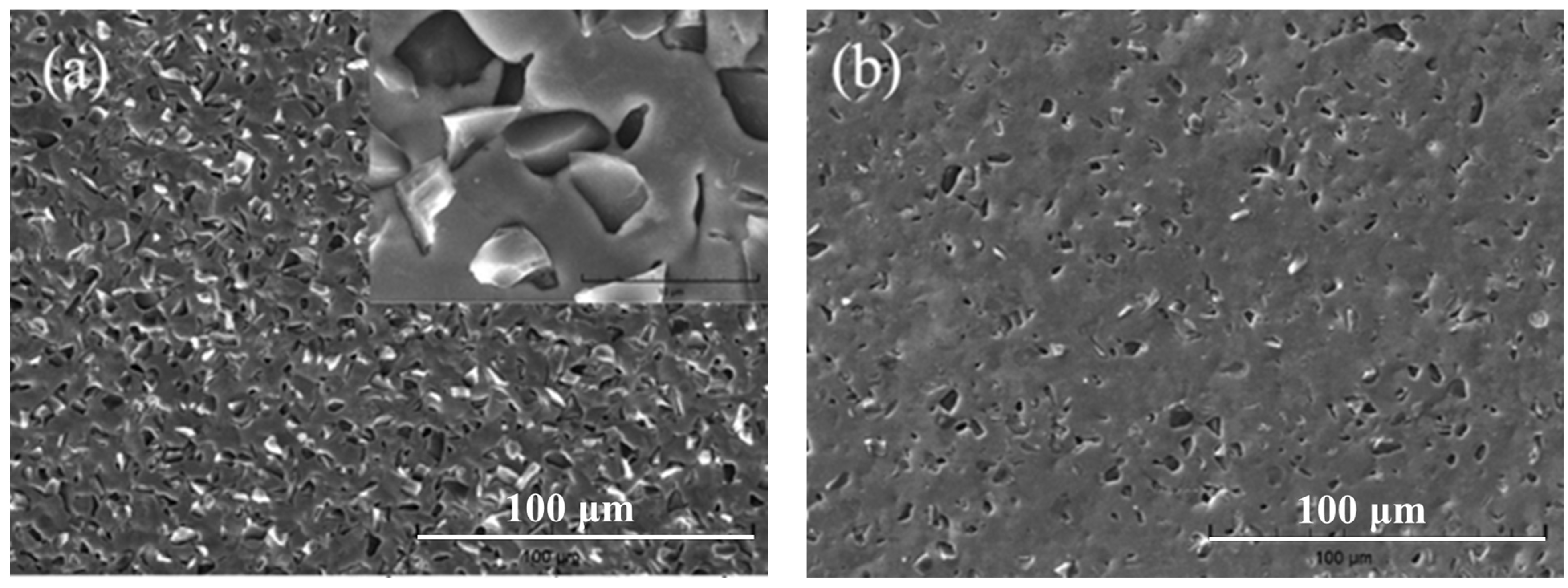
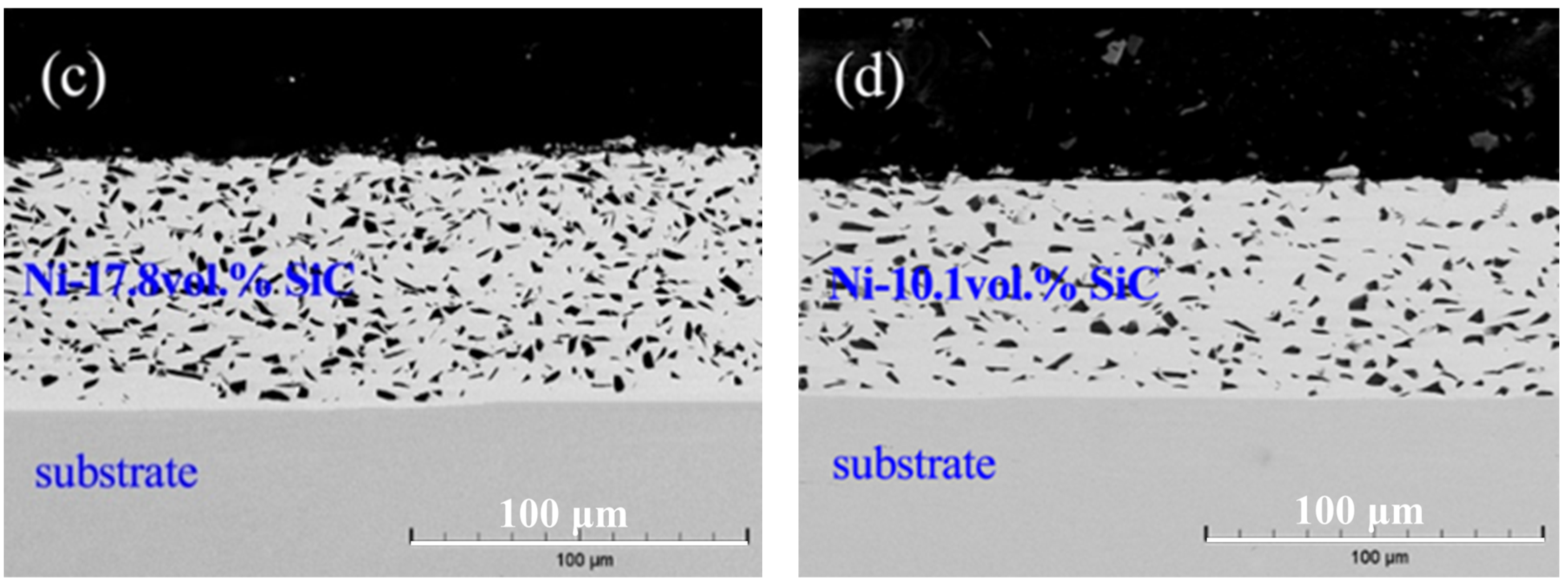


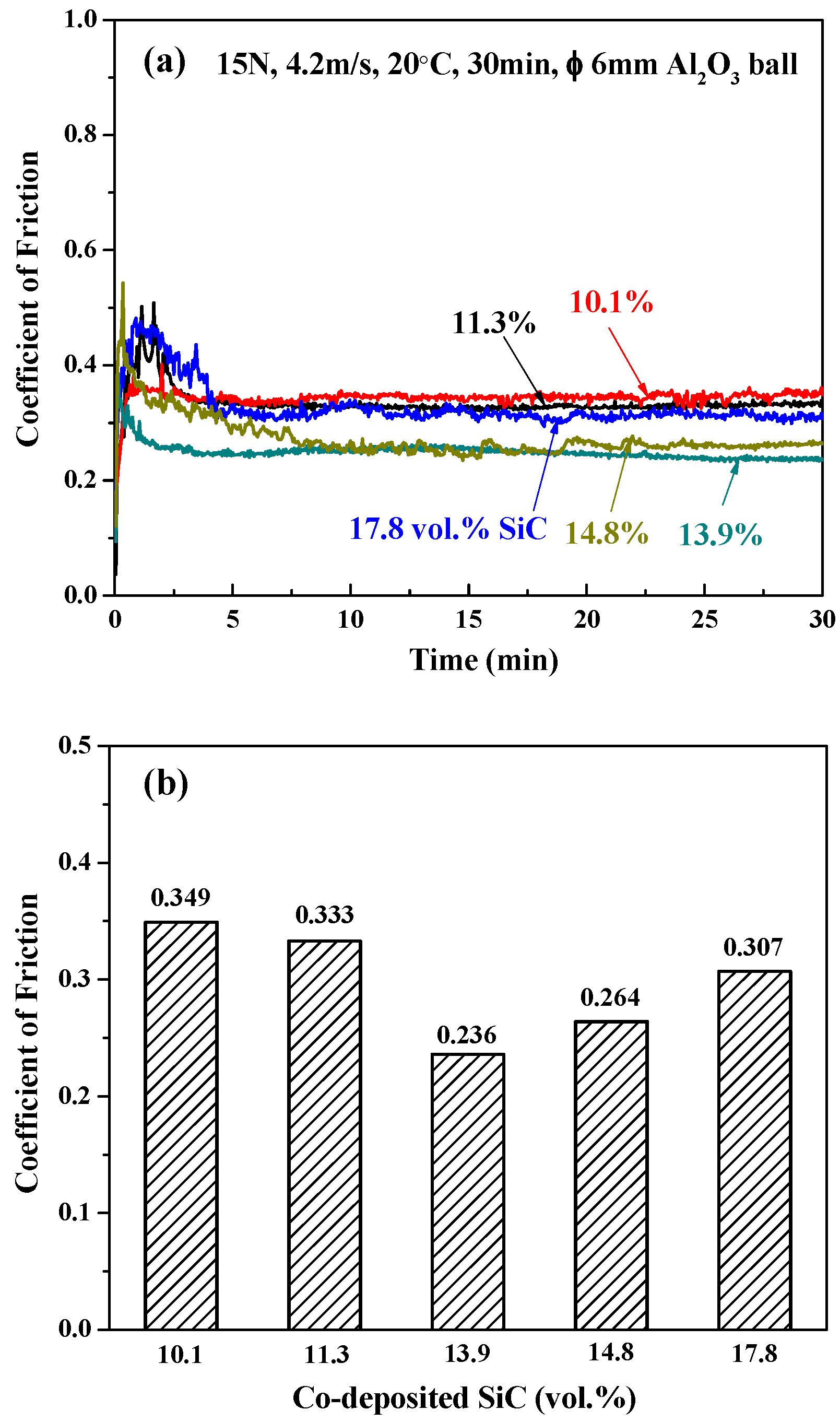



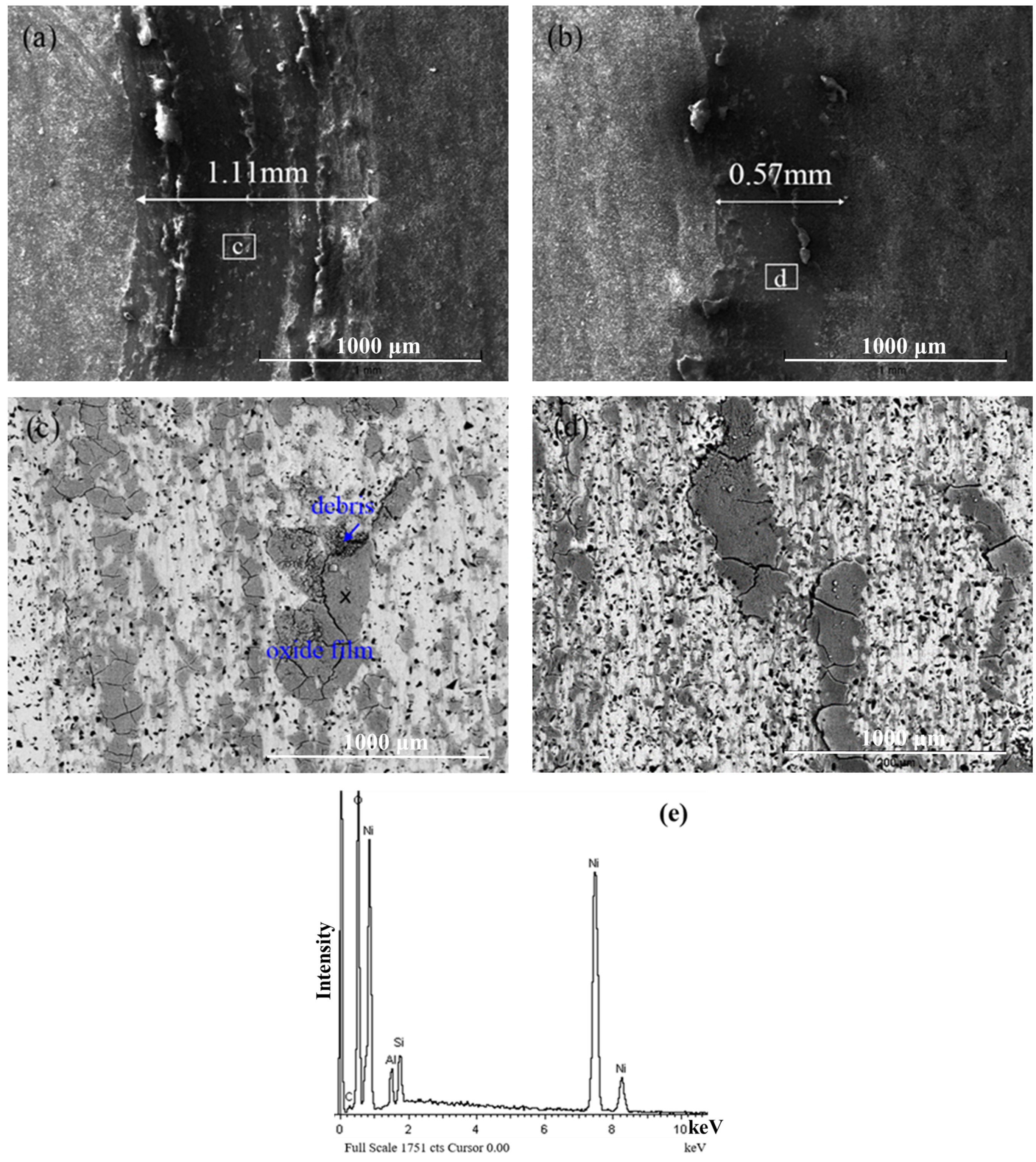
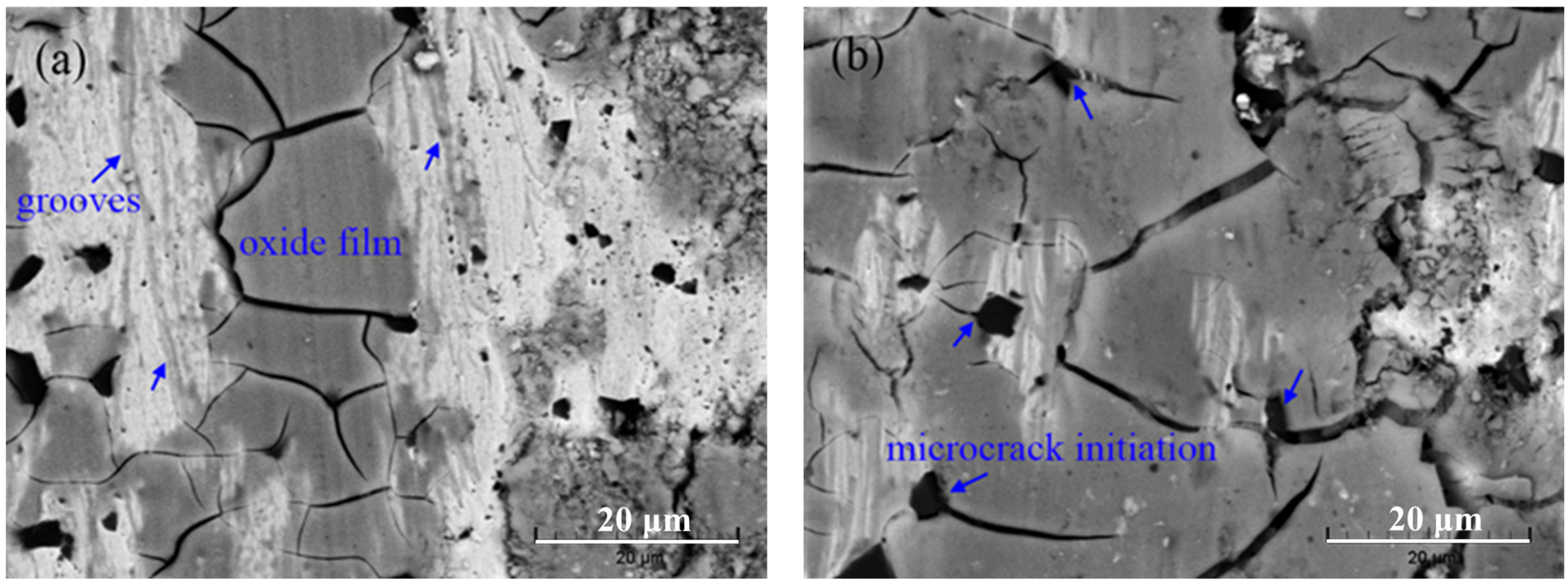

| Bath Composition | Content (g/L) | Plating Conditions | Parameters |
|---|---|---|---|
| NiSO4·6H2O | 400 | Current density (A/dm2) | 10 |
| NiCl2·6H2O | 15 | pH | 4.0 ± 0.1 |
| H3BO3 | 35 | Temperature (°C) | 60 |
| C6H4SO2NNa·6H2O | 2.5 | Plating time (min) | 30 |
| CTAB | 0.4 | Agitation method | Pump-circulating method and air-stirring method |
| SiC | 20 |
Disclaimer/Publisher’s Note: The statements, opinions and data contained in all publications are solely those of the individual author(s) and contributor(s) and not of MDPI and/or the editor(s). MDPI and/or the editor(s) disclaim responsibility for any injury to people or property resulting from any ideas, methods, instructions or products referred to in the content. |
© 2024 by the authors. Licensee MDPI, Basel, Switzerland. This article is an open access article distributed under the terms and conditions of the Creative Commons Attribution (CC BY) license (https://creativecommons.org/licenses/by/4.0/).
Share and Cite
Wang, S.; Xie, F.; Wu, X. Effect of SiC Contents on Wear Resistance Performance of Electro-Codeposited Ni-SiC Composite Coatings. Coatings 2024, 14, 1224. https://doi.org/10.3390/coatings14091224
Wang S, Xie F, Wu X. Effect of SiC Contents on Wear Resistance Performance of Electro-Codeposited Ni-SiC Composite Coatings. Coatings. 2024; 14(9):1224. https://doi.org/10.3390/coatings14091224
Chicago/Turabian StyleWang, Shaoqing, Faqin Xie, and Xiangqing Wu. 2024. "Effect of SiC Contents on Wear Resistance Performance of Electro-Codeposited Ni-SiC Composite Coatings" Coatings 14, no. 9: 1224. https://doi.org/10.3390/coatings14091224





